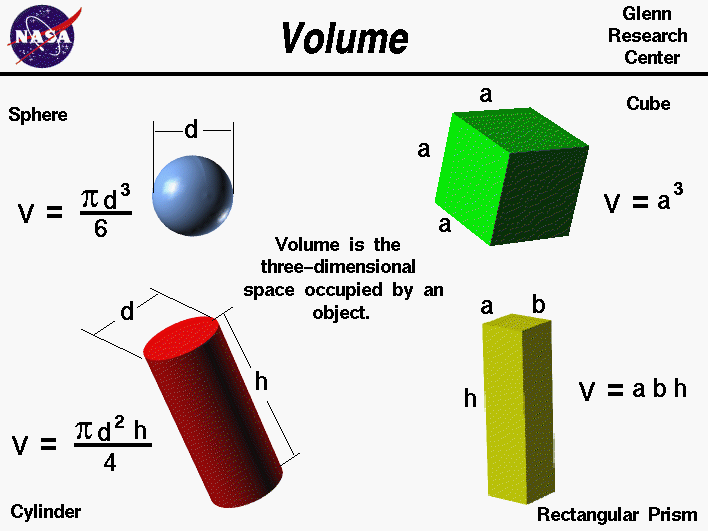Volume is the quantity of three-dimensional space enclosed by some closed boundary, for example, the space that a substance (solid, liquid, gas, or plasma) or shape occupied or contained. Volume is often quantified numerically using the SI derived unit, the cubic meter (m3).
The volume of a container is generally understood to be the capacity of
the container, i. e. the amount of fluid (gas or liquid) that the
container could hold, rather than the amount of space the container
itself displaces.
The volume of a solid (whether regularly or irregularly shaped) can be determined by fluid displacement.
Displacement of liquid can also be used to determine the volume of a
gas. The combined volume of two substances is usually greater than the
volume of one of the substances.

cube = a 3
rectangular prism = l b h
triangle = (1/2)b h l
cylinder = b h = ∏ r 2 h
pyramid = (1/3) b h = (1/3) h w l
cone = (1/3) b h = (1/3)∏ r 2 h
sphere = (4/3) ∏ r 3







